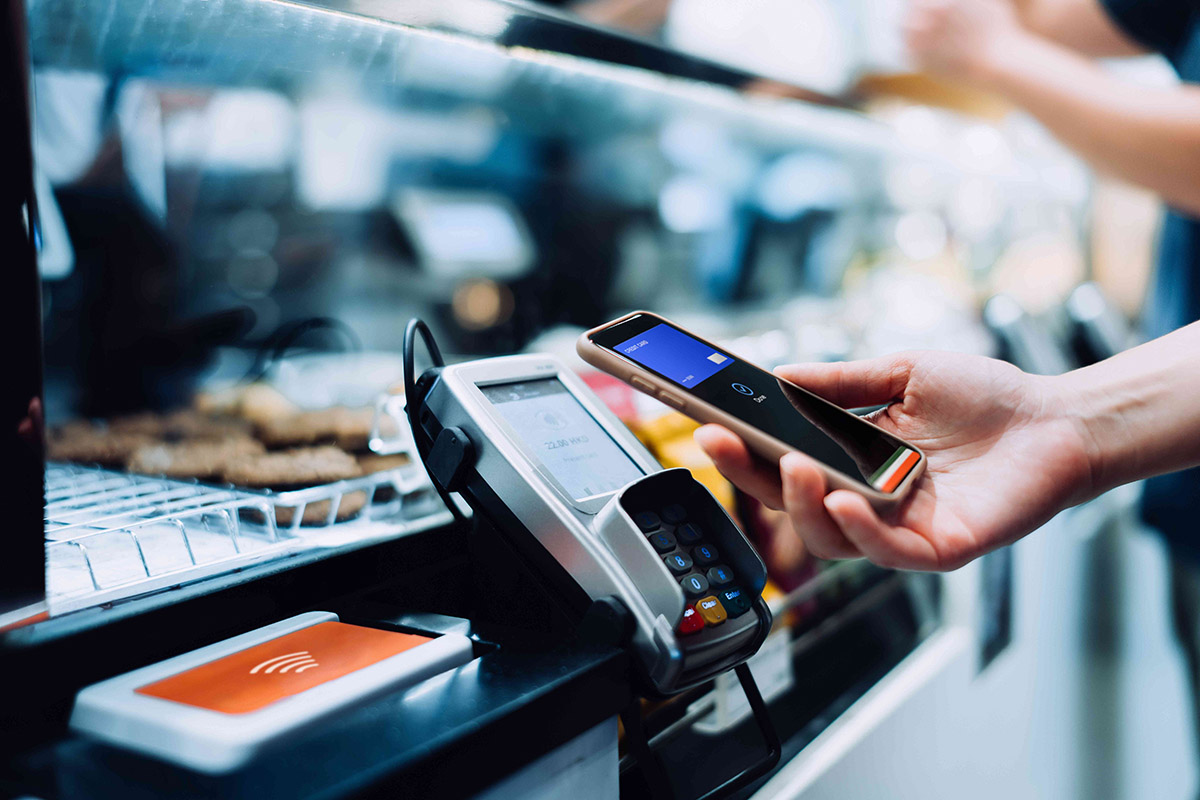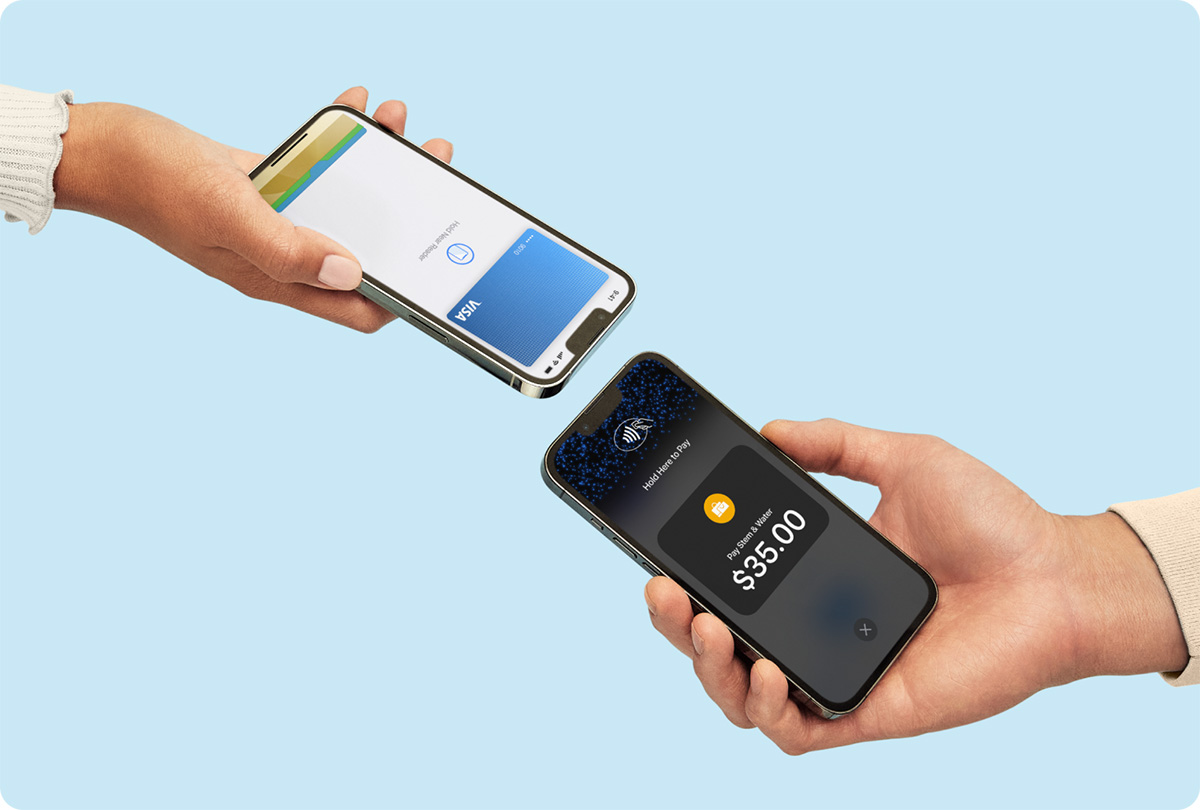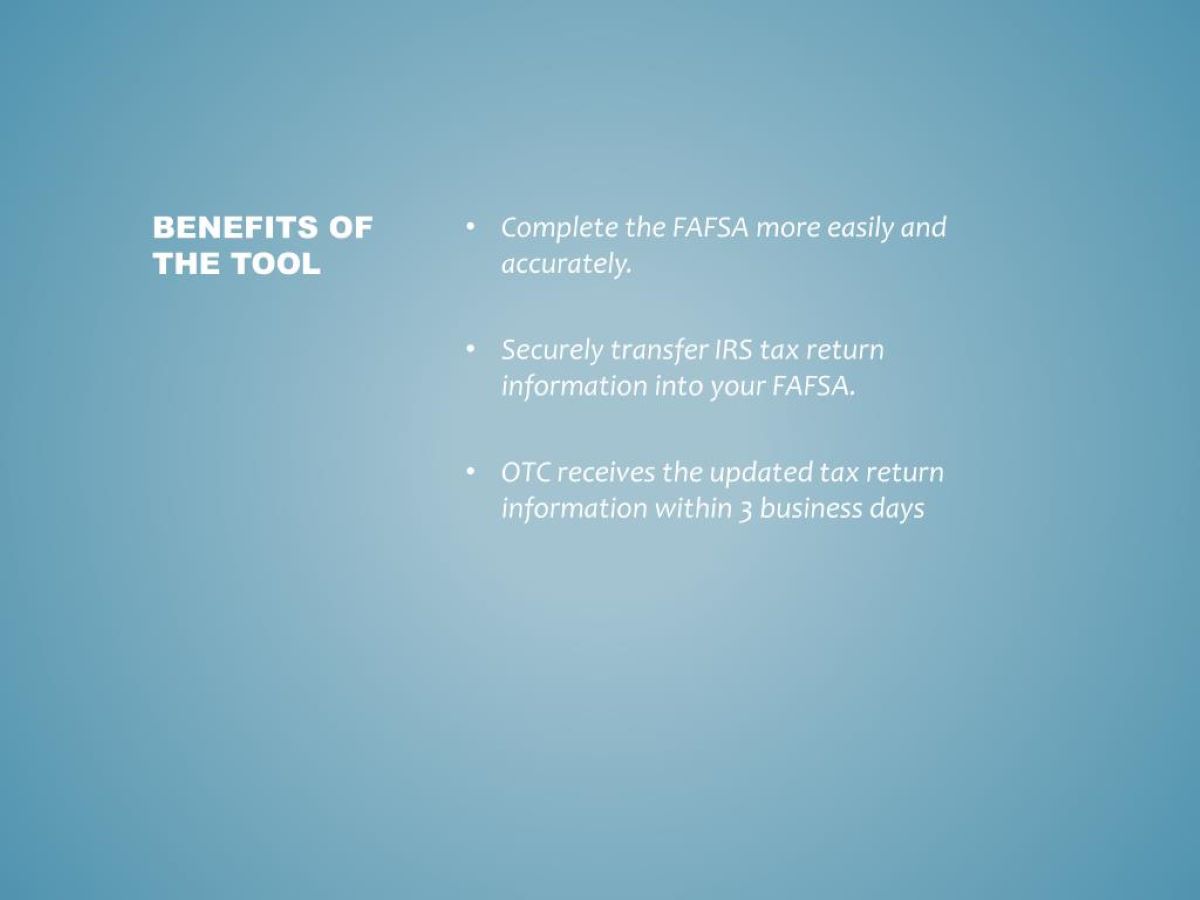Home>Finance>How To Take A Credit Card Payment Over The Phone


Finance
How To Take A Credit Card Payment Over The Phone
Published: November 4, 2023
Learn how to securely process credit card payments over the phone with our easy-to-follow guide. Simplify your finance management today!
(Many of the links in this article redirect to a specific reviewed product. Your purchase of these products through affiliate links helps to generate commission for LiveWell, at no extra cost. Learn more)
Table of Contents
- Introduction
- Understanding Phone Credit Card Payments
- Legal Considerations
- Necessary Tools and Equipment
- Steps to Take a Credit Card Payment Over the Phone
- Verifying the Customer’s Information
- Processing the Payment
- Ensuring Payment Security
- Addressing Customer Concerns and Questions
- Best Practices for Phone Credit Card Payments
- Conclusion
Introduction
With the advent of technology, conducting financial transactions has become easier than ever. One such method is taking credit card payments over the phone. This convenient option allows businesses to securely process payments without the need for customers to physically swipe their credit cards.
In today’s fast-paced world, providing customers with the flexibility to make payments over the phone is crucial for businesses. Whether it’s a small retail store or a large e-commerce platform, the ability to take credit card payments over the phone can greatly enhance customer satisfaction and boost sales.
However, it’s important to ensure that the process is secure, compliant with regulations, and tailored to meet the specific needs of your business. In this article, we will explore the various aspects of taking credit card payments over the phone, including the legal considerations, necessary tools and equipment, and step-by-step guidelines to ensure a smooth payment process.
Moreover, we’ll discuss the importance of verifying customer information, processing payments securely, and addressing customer concerns and questions. By following the best practices outlined in this article, you can offer a seamless and trustworthy payment experience to your customers.
So, if you’re ready to take your business to the next level by accepting credit card payments over the phone, let’s dive in and explore the ins and outs of this convenient payment method!
Understanding Phone Credit Card Payments
Phone credit card payments, also known as card-not-present transactions, allow businesses to accept payments over the phone without physically swiping or inserting a customer’s credit card. Instead, the payment information is provided verbally or entered manually into a secure payment processing system.
There are several reasons why businesses may choose to offer phone credit card payments. Firstly, it provides convenience for customers who may not be able to make payments in person or through online channels. This includes individuals who prefer speaking with a customer service representative or those who face technical difficulties with online transactions.
Furthermore, phone credit card payments can benefit businesses that operate in industries where remote sales or services are common. This includes sectors such as hospitality, travel, e-commerce, and professional services. By offering this payment option, businesses can expand their customer base and increase sales.
However, it’s important to note that phone credit card payments come with inherent risks. Since the physical credit card is not present during the transaction, businesses must implement robust security measures to protect sensitive customer information. This includes adhering to Payment Card Industry Data Security Standard (PCI DSS) requirements to safeguard cardholder data.
By understanding the nuances of phone credit card payments, businesses can mitigate risks and provide a secure platform for customers to make payments. In the following sections, we will dive deeper into the legal considerations, tools and equipment required, and step-by-step guidelines for effectively processing credit card payments over the phone.
Legal Considerations
When it comes to taking credit card payments over the phone, businesses must adhere to certain legal considerations to ensure compliance. These considerations help protect both the business and the customers involved in these transactions. Here are some key legal aspects to keep in mind:
- Payment Card Industry Data Security Standard (PCI DSS): It is crucial to adhere to the PCI DSS requirements, which are a set of security standards designed to protect cardholder data. Businesses that handle credit card information must comply with these standards to ensure the security of customer data during phone credit card transactions.
- Consent and Authorization: Before processing a credit card payment over the phone, businesses must obtain the customer’s consent and authorization to make the transaction. This can be done by clearly communicating the purpose of the transaction, the total amount to be charged, and any applicable terms and conditions.
- Privacy Laws: Businesses must also comply with applicable privacy laws when handling personal and financial information of customers during phone credit card transactions. This includes obtaining proper consent for data collection and ensuring secure storage and transmission of customer information.
- Recording and Documentation: In some jurisdictions, businesses may be required to record phone conversations during credit card transactions for compliance and dispute resolution purposes. It is important to be aware of the legal requirements regarding recording and storing such conversations.
- Test Transaction Limitations: Some credit card processors may limit the number of test transactions that businesses can perform over the phone. It is essential to understand these limitations and ensure that the necessary testing is conducted within the allowed parameters.
It is advisable for businesses to consult legal professionals or industry experts who specialize in payment processing and data security to ensure full compliance with these legal considerations. By doing so, businesses can protect themselves from potential legal issues, maintain customer trust, and provide a secure and reliable payment experience over the phone.
Necessary Tools and Equipment
To successfully process credit card payments over the phone, businesses must have the necessary tools and equipment in place. These tools help ensure a smooth and secure payment process for both the business and the customer. Here are some essential tools and equipment for phone credit card payments:
- Phone System: A reliable phone system is crucial for conducting credit card transactions over the phone. This can be a landline phone or a VoIP (Voice over Internet Protocol) system. It is important to have clear audio quality and a dedicated line for processing payments to avoid interruptions or misunderstandings.
- Payment Gateway or Virtual Terminal: A payment gateway or virtual terminal is software that allows businesses to securely process credit card payments. This system enables the manual entry of credit card information and encrypts the data to protect against unauthorized access. Businesses should choose a reputable payment gateway provider that complies with industry standards and offers robust security features.
- Data Security Measures: Since phone credit card payments involve the transmission and storage of sensitive customer data, businesses must implement data security measures. This includes using secure networks, regularly updating and patching software, and encrypting customer information to prevent unauthorized access.
- Call Recording Software (if applicable): In some jurisdictions or industries, businesses may be required to record phone conversations during credit card transactions. In such cases, businesses must invest in call recording software that complies with legal requirements and ensures the secure storage of recorded conversations.
- Scripts and Training Materials: To ensure consistency and professionalism during phone credit card transactions, businesses should develop scripts and training materials for their employees. These resources provide guidelines on how to handle customer inquiries, obtain necessary information, and process payments efficiently.
It is important for businesses to regularly assess their tools and equipment to ensure they are in good working condition and up to date with the latest security features. Investing in reliable tools and maintaining a secure infrastructure is essential for a seamless and secure phone credit card payment process.
Steps to Take a Credit Card Payment Over the Phone
The process of taking a credit card payment over the phone involves several steps to ensure a smooth and secure transaction. By following these steps, businesses can effectively process payments and provide a positive experience for their customers. Here are the key steps to take a credit card payment over the phone:
- Gather Customer Information: Start by collecting the necessary customer information, such as their name, billing address, phone number, and credit card details (card number, expiration date, and CVV code). It is important to request this information politely and reassure customers that their data will be handled securely.
- Verify the Customer’s Information: Double-check the information provided by the customer to ensure its accuracy. This includes verifying the billing address and confirming that the credit card details match the information provided. Address any discrepancies or errors with the customer before proceeding with the transaction.
- Obtain Customer Consent and Authorization: Clearly explain the purpose of the transaction, the total amount to be charged, and any applicable terms and conditions. Obtain the customer’s consent and authorization to proceed with the payment. Make sure they understand and agree to the transaction details.
- Enter Payment Information: Use a secure payment gateway or virtual terminal to manually enter the credit card information provided by the customer. Ensure that the system encrypts and securely stores the data to protect against unauthorized access or data breaches.
- Process the Payment: Once the payment information is entered, initiate the transaction through the payment gateway. Follow the prompts provided by the system to complete the payment process. Be patient and allow the system to process the transaction securely.
- Provide Confirmation and Receipt: Once the payment is successfully processed, provide the customer with a confirmation of the transaction. This can be done verbally or by sending an email receipt to the customer’s provided email address. Make sure to include relevant details, such as the payment amount, date, and reference number.
- Record Transaction Details: Keep a record of the transaction details for future reference and reconciliation. This includes maintaining a log of the customer’s information, transaction amount, and date. This record can be useful for dispute resolution or accounting purposes.
By following these steps in a systematic and diligent manner, businesses can ensure a seamless and secure credit card payment process over the phone. It is important to train employees involved in handling these transactions to provide consistent and professional service to customers.
Verifying the Customer’s Information
Verifying the customer’s information is a crucial step when taking a credit card payment over the phone. This helps ensure the accuracy of the data provided and minimizes the risk of fraudulent transactions. Here are some important guidelines to follow when verifying the customer’s information:
- Double-check the Billing Address: Verify that the billing address provided by the customer matches the address associated with the credit card. This can help detect any inconsistencies or potential signs of fraud. If there are any discrepancies, request additional proof of address to confirm the customer’s identity.
- Confirm the Cardholder’s Name: Ensure that the name provided by the customer matches the name on the credit card. This can be done by politely asking the customer to confirm their name as it appears on the card. If there is a mismatch, it may indicate fraudulent activity, and further verification may be required.
- Validate the Credit Card Number: Carefully enter the credit card number provided by the customer to avoid any input errors. Cross-reference the number with the card type (Visa, Mastercard, etc.) to ensure compatibility. Consider using a payment gateway that can automatically validate the card number to minimize potential errors.
- Verify the Expiration Date: Confirm that the expiration date provided by the customer is within the valid range. Expired credit cards cannot be used for transactions, so it is essential to verify the expiration date to avoid payment rejections.
- Request the CVV Code: The Card Verification Value (CVV) code is a three or four-digit security code printed on the back of the credit card. Ask the customer to provide this code to further authenticate the transaction. Do not record or store the CVV code as it is a sensitive security feature.
- Use Address Verification Service (AVS): Some payment gateways offer Address Verification Service (AVS) as an additional security measure. AVS compares the billing address provided by the customer with the address on file with the credit card issuer. Consider enabling AVS to enhance the verification process.
By diligently verifying the customer’s information, businesses can minimize the risk of fraudulent transactions and ensure that the payment process is securely conducted. It is important to handle customer information with care, respecting privacy regulations and guidelines to maintain customer trust and protect sensitive data.
Processing the Payment
Processing the payment is a critical step in taking a credit card payment over the phone. It involves securely transmitting the customer’s payment information and completing the transaction. Follow these guidelines to effectively process the payment:
- Use a Secure Payment Gateway: Ensure that you have a reliable and secure payment gateway in place. This will encrypt the customer’s payment information and securely transmit it to the acquiring bank for authorization. Choose a payment gateway that complies with industry standards and offers robust security features.
- Manually Enter Payment Information: Using the secure payment gateway or virtual terminal, carefully enter the customer’s credit card information. Double-check the accuracy of the details, including the card number, expiration date, and CVV code. This step is crucial to prevent any errors and avoid payment rejections.
- Authenticate the Transaction: The payment gateway will communicate with the acquiring bank to verify the customer’s credit card details and ensure there are sufficient funds available. This process, known as authorization, typically takes only a few seconds. Wait for the authorization response to proceed with the transaction.
- Handle Declined Payments: If the authorization request is declined, inform the customer politely and advise them on alternative payment methods. It is essential to handle declined payments with empathy and professionalism, as it may be due to various factors, such as insufficient funds or card restrictions.
- Obtain an Authorization Code: If the payment is authorized, the payment gateway will provide an authorization code. This code serves as proof that the transaction was approved. Make a note of the authorization code as it may be required for troubleshooting or dispute resolution purposes.
- Complete the Transaction: Once the payment is authorized, inform the customer that the transaction was successful. Provide them with details such as the payment amount, the date of the transaction, and the reference number for their records. Offer assistance with any additional questions or concerns they might have.
- Produce a Receipt: Send a receipt to the customer as proof of the completed transaction. This can be done by sending an email with the transaction details or providing a printed receipt if requested. The receipt should include pertinent information such as the customer’s name, payment amount, and a unique transaction reference number.
By following these steps, businesses can ensure the smooth and secure processing of credit card payments over the phone. It is essential to handle customer information with care, use secure payment gateways, and provide a seamless payment experience to build trust and enhance customer satisfaction.
Ensuring Payment Security
When taking credit card payments over the phone, businesses have a responsibility to ensure the security of the customer’s payment information. Implementing robust security measures not only protects sensitive data but also builds trust with customers. Here are some key practices to ensure payment security:
- Secure Payment Gateway: Choose a reputable payment gateway that meets industry security standards and encrypts customer data during transmission. Look for features such as tokenization, which replaces card details with unique tokens, and secure storage of customer information.
- PCI DSS Compliance: Adhere to the Payment Card Industry Data Security Standard (PCI DSS) requirements. These standards outline security measures to protect cardholder data, including maintaining a secure network, regularly monitoring and testing systems, and implementing access controls.
- Data Encryption: Utilize encryption technology to protect customer payment information from unauthorized access. Encrypt data both during transmission and when it is at rest, ensuring that only authorized individuals have access to the decrypted data.
- Restrict Data Access: Limit access to customer payment information on a “need-to-know” basis. Only authorized personnel should handle this sensitive data, and strict access controls should be in place to prevent unauthorized viewing or disclosure.
- Secure Network Infrastructure: Maintain a secure network infrastructure with firewalls, up-to-date antivirus software, and regular security patches. Regularly monitor network activity and implement measures to detect and prevent potential security breaches.
- Employee Training: Provide training to employees who handle phone credit card payments. Emphasize the importance of data security, educate them on best practices, and make them aware of common security threats such as phishing attempts or social engineering.
- Fraud Detection and Monitoring: Implement fraud detection mechanisms to identify any suspicious or unusual activity. Monitor transactions for signs of fraud and promptly address any potential security breaches.
- Document and Maintain Security Policies: Develop and document security policies and procedures for handling credit card payments over the phone. Regularly review and update these policies to address emerging security threats and comply with industry best practices.
By implementing these security practices, businesses can significantly reduce the risk of payment fraud and enhance the trust of their customers. Prioritizing payment security not only protects customer data but also safeguards the reputation and integrity of the business.
Addressing Customer Concerns and Questions
When taking credit card payments over the phone, it is essential to address any concerns or questions customers may have. Engaging with customers in a helpful and professional manner not only provides excellent customer service but also reassures them of the security and reliability of the payment process. Here are some strategies for addressing customer concerns and questions:
- Active Listening: Practice active listening when a customer expresses a concern or asks a question about the payment process. Give them your full attention, be patient, and demonstrate empathy to understand their perspective.
- Clear Communication: Use clear and concise language to address customer concerns or questions. Avoid jargon or technical terms that might confuse the customer. Explain the payment process in a way that is easy for them to understand and provide additional clarification if needed.
- Reassure Security Measures: Proactively reassure customers about the security measures in place to protect their payment information. Explain the encryption technology, secure payment gateway, and adherence to PCI DSS compliance. Emphasize the commitment to data security and the privacy of their information.
- Transparency: Be transparent about the payment process, including any fees, terms, or conditions associated with the transaction. Provide clear explanations and honest answers to build trust with the customer and avoid any misunderstandings.
- Offer Options: If a customer has concerns about providing their credit card information over the phone, offer alternative payment methods such as secure online payment portals or in-person payment options. Provide guidance on how to use these alternative methods if they are more comfortable with them.
- Follow-Up: If a customer raises a specific concern or question that requires further investigation, assure them that their concern will be addressed promptly. Clearly communicate the timeline for resolution and ensure that you follow up with them in a timely manner to provide updates or resolutions.
- Escalation Procedure: Have a clear escalation procedure in place for handling complex or unresolved customer concerns. Provide the necessary contact information or escalate the issue internally to ensure the customer receives appropriate assistance and support.
- Thank and Appreciate: Express gratitude to customers for choosing to make a payment over the phone. Show appreciation for their time, patience, and trust in your business. A simple thank-you can go a long way in building customer loyalty and satisfaction.
By actively addressing customer concerns and providing helpful responses to their questions, businesses can enhance customer satisfaction and trust. Effective communication and a customer-centric approach are key to building long-lasting relationships with customers.
Best Practices for Phone Credit Card Payments
When handling phone credit card payments, it is important to follow best practices to ensure a smooth and secure transaction process. Implementing these practices not only protects the customer’s payment information but also enhances the overall payment experience. Here are some best practices for handling phone credit card payments:
- Secure Payment Environment: Create a secure environment when processing phone credit card payments. Ensure that your workspace is free from distractions and that customer payment information cannot be overheard by others.
- Train Employees: Properly train employees who handle phone credit card payments. Educate them about data security best practices, customer service etiquette, and how to handle customer concerns or questions effectively.
- Utilize Dual Authentication: Implement a dual authentication process to verify the identity of customers. This can include asking for additional personal information or utilizing a callback system to confirm the legitimacy of the transaction.
- Do Not Store Cardholder Data: Avoid storing cardholder data whenever possible. If customer information must be recorded for record-keeping purposes, follow strict data protection processes and ensure that the data is securely archived or destroyed when no longer needed.
- Regularly Monitor Payments: Monitor credit card payments regularly to identify any suspicious or fraudulent activity. Spot-check transactions and investigate any inconsistencies promptly. Monitoring payments helps detect potential security breaches and maintain the integrity of the payment process.
- Keep Up with PCI DSS Compliance: Regularly review and comply with the Payment Card Industry Data Security Standard (PCI DSS) requirements. Stay updated on the latest compliance guidelines and implement the necessary security measures to protect customer payment information.
- Encrypt Sensitive Data: Encrypt sensitive customer payment data during transmission and storage. Encryption adds an extra layer of security and ensures that the information is protected even if intercepted by unauthorized individuals.
- Monitor for Malware: Regularly scan computer systems and devices for malware. Use up-to-date antivirus software and keep operating systems and applications patched to prevent vulnerabilities that could be exploited by cybercriminals.
- Provide Clear Terms and Conditions: Clearly communicate the terms and conditions of payment over the phone to the customer. Ensure that they understand factors such as refund policies, cancellation fees, and any associated charges or additional costs.
- Regularly Review Security Procedures: Conduct periodic reviews of your security procedures to identify areas for improvement and address any emerging security threats. Regularly update policies, employee training, and technology solutions to stay ahead of potential vulnerabilities.
By implementing these best practices, businesses can enhance the security and reliability of their phone credit card payment process. By prioritizing data security, training employees, and following industry guidelines, businesses can provide a safe and efficient payment experience for their customers.
Conclusion
Taking credit card payments over the phone is a convenient and efficient method for businesses to process transactions and serve their customers. However, it is crucial to prioritize payment security, compliance, and customer satisfaction throughout the process. By following the best practices outlined in this article, businesses can ensure a smooth and secure payment experience.
Understanding the legal considerations and having the necessary tools and equipment in place are essential steps in setting up a phone credit card payment system. Verifying customer information, processing payments securely, and addressing customer concerns and questions are crucial aspects of providing a trustworthy payment experience.
By adhering to data security measures, such as PCI DSS compliance, encryption, and secure network infrastructure, businesses can protect customer payment information from potential threats. Regularly reviewing procedures, training employees, and staying up to date with emerging security practices are key to maintaining the integrity of the payment process.
By following the steps outlined in this article and implementing the best practices, businesses can build trust with customers, enhance customer satisfaction, and prevent fraud. Offering phone credit card payments is not only a convenience for customers but also a way for businesses to expand their sales channels and provide flexible payment options.
In conclusion, taking credit card payments over the phone requires careful attention to security, compliance, and customer service. By implementing the guidelines and best practices discussed in this article, businesses can create a seamless and secure payment process that instills confidence in their customers. Embracing phone credit card payments can be a strategic business move that drives customer satisfaction, boosts sales, and positions the business as a trusted and reliable service provider.














